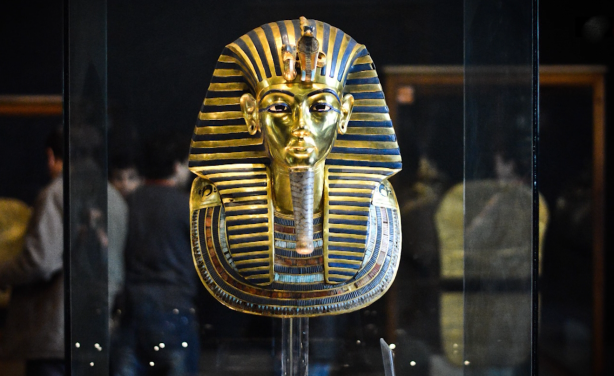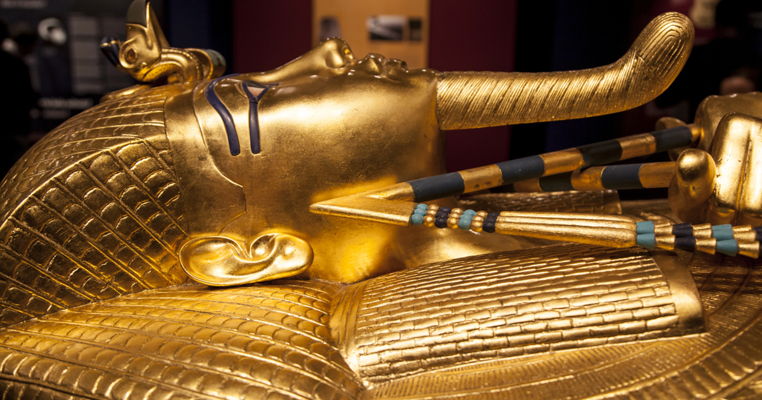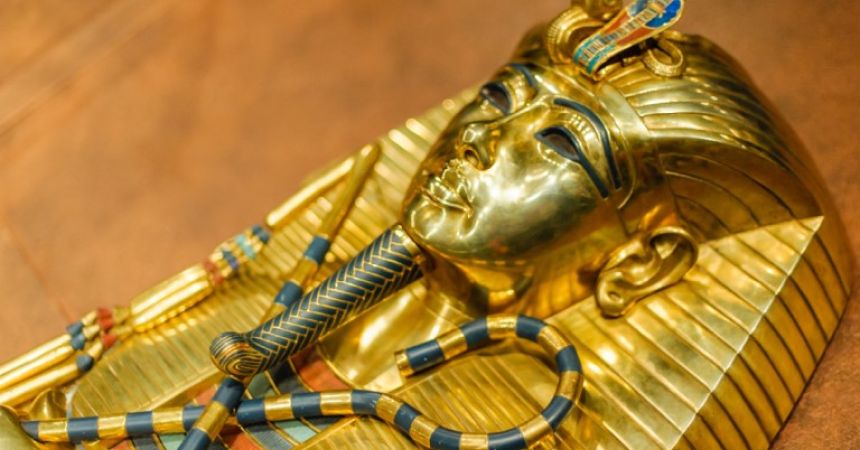The discovery of King Tutankhamun’s tomb in 1922 by British archaeologist Howard Carter is one of the most significant events in archaeological history. Among the many treasures found within the tomb, the golden mask of the young pharaoh remains the most iconic symbol of ancient Egypt’s royal magnificence. The first photograph capturing this extraordinary mask has become an enduring symbol of Egypt’s cultural and artistic brilliance, offering the world a rare, undisturbed glimpse into the opulence of Egypt’s royal life.
Table of Contents
ToggleThe Discovery That Captivated the World
The tomb of King Tutankhamun, hidden in the Valley of the Kings for over 3,000 years, was an unprecedented find. Tutankhamun’s reign was brief, but his tomb was filled with over 5,000 artifacts that provided a wealth of information about Egypt’s royal and religious practices. The discovery of this tomb, especially the golden mask, sparked worldwide fascination, renewing interest in Egyptology and turning Tutankhamun into one of the most famous figures in history.

The tomb’s treasures, which included chariots, gilded furniture, and jewelry, highlighted the grandeur of ancient Egyptian royal culture. The golden mask, in particular, became the defining artifact of the discovery, symbolizing the wealth, craftsmanship, and mystique of Egypt’s New Kingdom.
The Golden Mask: A Masterpiece of Divine Kingship
Crafted from solid gold and adorned with semi-precious stones such as lapis lazuli, turquoise, and carnelian, King Tutankhamun’s golden mask was designed to ensure his safe journey into the afterlife. The mask is an extraordinary portrayal of divine kingship, with the young pharaoh’s face depicted with a serene yet regal expression, framed by the royal headdress. The mask also features the divine cobra and vulture, which symbolize Tutankhamun’s rule over Upper and Lower Egypt.

The craftsmanship of the mask speaks to the advanced skills of ancient Egyptian artisans. The intricate inlay work and the use of gold demonstrate the civilization’s sophisticated metalworking techniques. Beyond its artistic brilliance, the mask also reflects the spiritual and religious beliefs of the time, emphasizing the king’s divine nature and the immortality of his reign.
Tutankhamun’s Reign and Legacy
Despite becoming king at the age of nine, Tutankhamun’s reign lasted only a decade, ending with his early death at around 18. Although his time on the throne was short, the treasures found in his tomb suggest that he held significant religious and political importance. The lavish burial, designed to ensure Tutankhamun’s comfort and protection in the afterlife, underscores the role of the pharaoh as the link between the gods and the people of Egypt.
The discovery of Tutankhamun’s tomb and its treasures highlighted the importance of the New Kingdom in ancient Egyptian history, a period known for its cultural and artistic achievements. The golden mask, alongside other artifacts, helps to cement Tutankhamun’s place in the annals of Egypt’s royal legacy, representing both his reign and the grandeur of Egyptian culture.
The Global Fascination with King Tut
The first photograph taken of King Tutankhamun’s tomb, with the golden mask at its heart, played a pivotal role in solidifying the young pharaoh’s place in global consciousness. The discovery ignited a worldwide fascination with ancient Egypt, fueling both public curiosity and scholarly research into Egyptian art, religion, and mummification practices. The wealth of artifacts unearthed from the tomb, especially the golden mask, has been carefully preserved and displayed in museums, allowing people worldwide to experience the magnificence of ancient Egypt’s royal culture.

The image of King Tutankhamun, forever linked with his golden mask, continues to be a powerful symbol of the ancient world. It represents both the continuity of kingship and the enduring cultural legacy of ancient Egypt, a civilization whose achievements in art, architecture, and religious thought continue to inspire awe today.
Conclusion: A Timeless Symbol of Egypt’s Royal Heritage
King Tutankhamun’s golden mask, immortalized in the first photograph of his tomb, remains one of the most iconic and awe-inspiring artifacts ever discovered. The mask symbolizes not only the grandeur and mystery of the ancient Egyptian monarchy but also the incredible achievements of one of the world’s oldest civilizations. The discovery of the tomb and its treasures, particularly the golden mask, continues to captivate the world, offering a timeless connection to Egypt’s royal legacy and its lasting influence on global culture.

